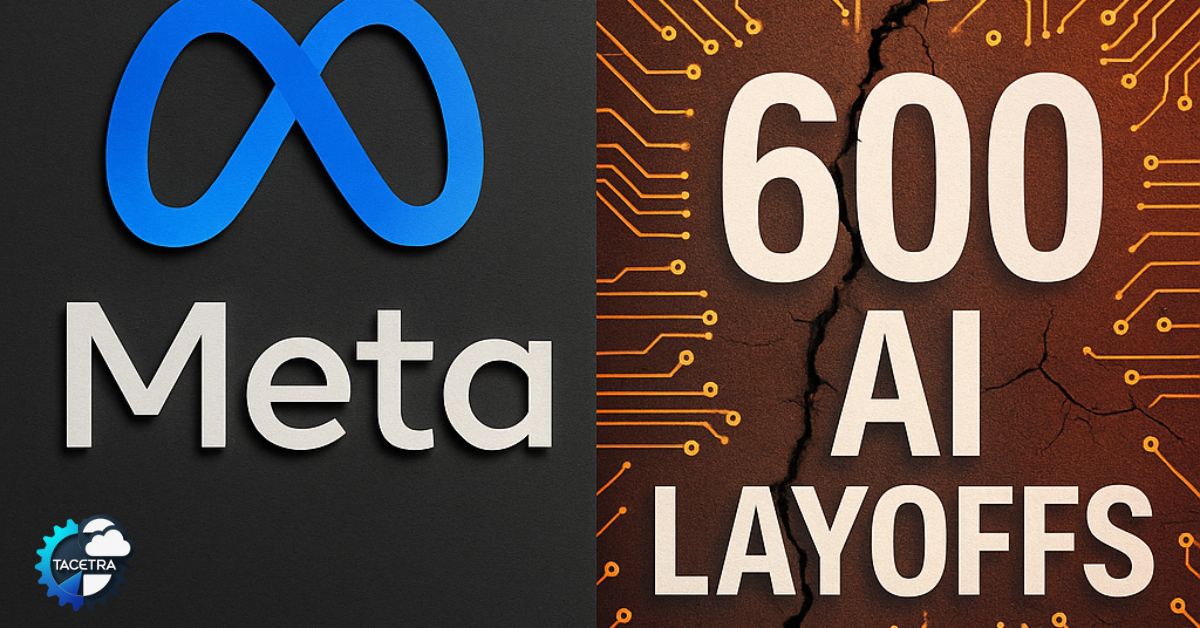Meta’s latest round of layoffs—cutting 600 employees from its Artificial Intelligence division—reveals something deeper than efficiency or “operational agility.” It’s not an AI story. It’s a corporate one!
While the official line frames it as a way to “reduce layers and operate more nimbly,” the reactions from investors and insiders paint a more cynical picture: this isn’t about smarter machines, but about power, politics, and profit.
1. “Hire to Fire”: The New Normal in Big Tech
The most striking takeaway from public reactions—especially in the Reddit thread on r/stocks—is how unsurprised people are. Commenters describe a “hire to fire” cycle that’s become an open secret in Silicon Valley.
Big tech firms like Meta reportedly hire aggressively to hoard talent and inflate headcount optics, only to shed staff months later under the guise of “performance management.”
One user summed it up bluntly: Meta’s culture isn’t about long-term growth—it’s about maintaining the illusion of momentum.
According to insiders, Meta has long operated on a “stack-ranking” system—each year, a set percentage of employees are labeled low-performing regardless of output. The 600 AI layoffs may simply be the latest iteration of that formula. The underlying message? A job at a FAANG (Facebook, Apple, Amazon, Netflix, Google) or now MANGO (Microsoft, Anthropic, Nvidia, Google, OpenAI) giant is no longer a stable career path, but a high-risk, high-paying contract gig.
2. Internal Power Struggles: The Real Intelligence Behind the Cuts
Many Redditors and tech commentators believe the layoffs aren’t driven by underperformance at all—but by an internal power struggle within Meta’s AI empire.
Reports suggest the cuts are concentrated in the Fundamental Artificial Intelligence Research (FAIR) unit, historically led by AI pioneer Yann LeCun. Meanwhile, hiring remains aggressive in Meta’s new “Superintelligence” division, led by CEO Mark Zuckerberg’s inner circle.
This looks less like cost-cutting and more like a political realignment—the new lab swallowing the old.
As one commenter noted: “It’s not about smarter AI—it’s about who has Zuck’s ear.”
That’s the real intelligence here: the power dynamics shaping the future of AI at Meta. Innovation often takes a backseat to executive alliances, internal rivalries, and shifting corporate priorities.
3. The AI Hype Cycle and Meta’s Financial Immunity
Beyond the politics, this event also fuels the broader debate around the AI hype cycle. Some online FB critics dismissed the entire field as a “stock-market fantasy,” pointing out that current models are still far from human-level intelligence.
Others push back, highlighting that Meta’s machine-learning systems already generate billions in ad revenue. The issue isn’t whether AI “works”—it’s whether Wall Street’s valuation of the dream is remotely tethered to reality.
Yet here’s the key difference: Meta can afford the chaos. With its advertising cash flow, Meta can absorb restructuring costs, fund moonshots, and still post massive profits. The layoffs don’t weaken Meta—they reinforce its dominance. In essence, the company prints money faster than it can burn political capital.
4. The Bigger Picture: What These Layoffs Really Mean
These 600 layoffs aren’t a sign that the AI bubble has burst. They’re a case study in corporate consolidation of power.
They show how, in today’s AI economy, an executive can pivot strategy overnight, spark an internal war, and discard hundreds of skilled engineers—all without denting the bottom line.
The real takeaway?
Stop viewing these tech giants as stable innovators and start seeing them as high-stakes casinos.
For investors, the right question isn’t “What does this say about AI?”—it’s “Is the cash-flow machine still running?”
For employees, the lesson is starker: your value is as temporary as the latest buzzword.
Closing Thoughts: The Human Chaos Behind Artificial Intelligence
In the end, Meta’s 600 layoffs don’t expose flaws in machine intelligence—they expose the fragility of human decision-making at the top of corporate hierarchies.
In the age of AI, the most unpredictable variable isn’t the algorithm. It’s the executive!
Because behind every AI breakthrough or layoff memo, there’s still one constant: ruthless, profit-driven politics disguised as progress.
Further Reading: Opinion on RTO: A Tool of Control, Not Collaboration
Discover more from TACETRA
Subscribe to get the latest posts sent to your email.
